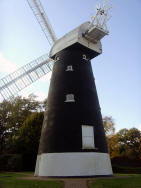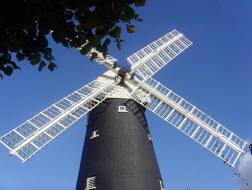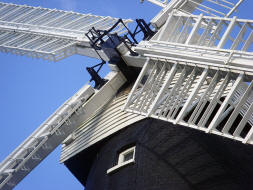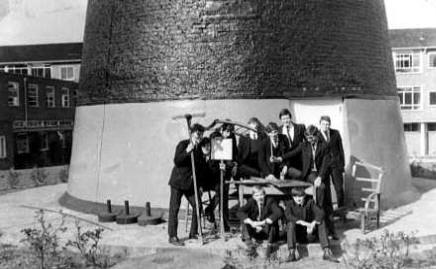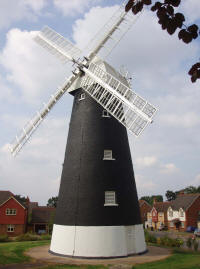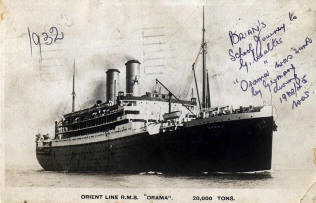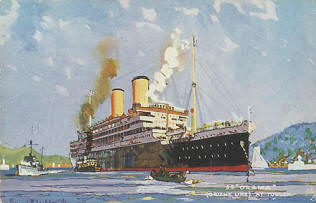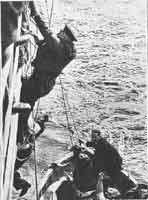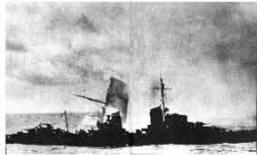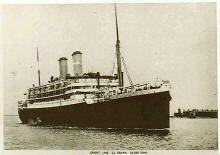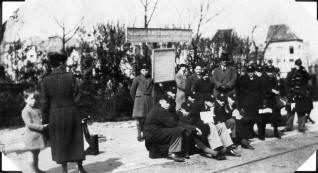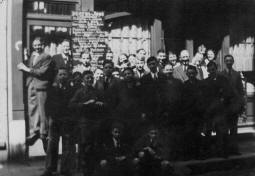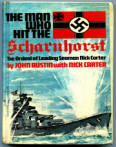|
Maurice Whitfield (JRGS 1959-66) visits Shirley Hills and the famous Windmill... |
||||||||
|
While in the area recently, I took
some photos on a lovely autumn day in Shirley.
The sense of nostalgia from visiting these places is as powerful
an experience as time-travel - the muddy football boots and
sodden ball, journeys home through Shirley Hills and that
fantastic landmark, The Windmill.
Since I have now returned to live in Croydon, I could perhaps be of service to Alumni members from my era, '59 - '66, who may have lived far away for a long time. Would anybody like a photo of their childhood home as it is now, for example? I'd be pleased to do this, since it would help to make the dog walk more interesting! Maurice Whitfield, Woodside Green, London SE25, October 2008 Email
Roger Adcock (JRGS 1963-68) adds: Maurice asks how we got
into the windmill. This left-hand photo taken in June
1967of mostly 5G shows where we entered The Mill via a door at
the rear. The right-hand image is one that I took on 5th
July 2006 of the newly refurbished Mill - that entrance door is
still there. Paul Graham (JRGS 1959-66) adds: The way to the upper floors of The Mill was by a steep wooden ladder – forbidden to go there – but I remember doing it at least once, though it may have been on an official task. Old furniture and sports stuff was stored on the upper floors. The ladder – or a modern replacement, but similar – was still there when I visited it about a year ago on an Open Day. |
||||||||
|
John Heath (JRGS 1969-71) recalls sixth-form life and teachers in the late-Sixties... |
|
I joined the JRGS sixth form in 1969,
having completed my O-Levels at Ingram Secondary Modern in Thornton
Heath. Accompanying me from Ingram were David Herbert Tucker and
Michael Close, both of whom I have lost touch with. David was a
keen Crystal Palace supporter and (conveniently) lived round the corner
from the Selhurst Park ground. He did brilliantly at A-Level and in 1971
went on to the University of Surrey to study Human Sciences. I went on
to the University of Sussex to study sociology. John R. Heath, Washington DC, USA, October 2008 Email |
|
Clive Whitehead (JRGS 1950-52) explains Anne Smith's recent claim to fame... |
|
I was not only a pupil at the old
JRGS school in Tamworth Road from September 1950 until May 1952,
but returned in the late-Sixties as a teacher of Social Studies,
English and PE. During the past few years I have become friends
with Anne Smith, ex-staff member at John Ruskin GS and
later Principal of John Ruskin High School and Sixth Form
College. Clive Whitehead, Perth, Western Australia, October 2005 Email
Your Webmaster adds:
On Sunday October 26, the globe-trotting Anne Smith
reported that she was off to Singapore for three days "after a
hectic three weeks in Australia with hardly a moment for feet to
touch ground. As you can see, I have survived, and enjoyed
travelling from Perth and Fremantle to Alice Springs, Ayers
Rock, the Flying Doctor base, Cairns, Port Douglas, the Great
Barrier Reef, Sydney (with a trip to the opera as well),
Canberra, the Blue Mountains, Melbourne and Ballarat. It has
been great!" |
|
David Anderson (JRGS 1964-71) discovers that parakeets are attacking The Mill... |
|
I thought that the Alumni might be interested in current a story from the Croydon Guardian dated Oct 3rd. [more] Curse of the African Queen strikes windmill
It survived the Blitz, several lightning strikes and threats of
demolition but now Shirley Windmill is being gradually destroyed by a
new enemy - parrots. Bizarre I know, and the story does have a serious side but whoever would have thought this could be a problem in the good old Surrey suburb of Shirley? David Anderson, Southampton, Hants, October 2008 Email.
Geoff van Beek/Downer (JRGS 1962-69)
adds: Many thanks for
the latest JRGS update concerning damage to the mill by rose-ringed
parakeets.
David Anderson replies: It just struck me that the comments from
Geoffrey Van BEEK about the parakeets were most appropriate! He should
know. Paul Graham (JRGS 1959-66) adds: And I could make a joke about a polygon but I don’t think Mr. "Puncher" Pearce would approve! |
|
Roger Adcock (JRGS 1963-68) recalls his father's European school field trips... |
|
My father Brian Adcock attended John Ruskin School from
1931 until 1936. From his photographs, shown below, it seems
that he went on two school trips. Of interest may be that The Orama was built by Vickers-Armstrong, Barrow-in-Furness in 1924 for the Orient Line with accommodation for 1,700 passengers. She was converted to a troopship in 1940, and used to transport the British Expeditionary Force to Norway following the German Invasion. On the 8th June 1940, she was sunk 300 miles West of Narvik, by the German High Seas Fleet comprising Scharnhorst, Gneisenau and Admiral Hipper. The Orama lost 19 killed and 280 taken prisoner. There were heavy losses on the other allied ships also sunk, the aircraft carrier HMS Glorious, two destroyers HMS Ardent and Acasta, the trawler Juniper and the oil tanker Oil Pioneer. I attach above German photos of the sinking of The Orama. One with a German destroyer going past ( centre) and the other of survivors boarding a German ship (left). And here are two images from a school trip to Belgium during 1936. Click on thumbnail to view a larger version. My brother Trevor Adcock (JRGS 1965-72) also helped find all of these materials in our Dad's papers. Roger Adcock, Oxted, Surrey, October 2008 Email
|
|
Archived News/Events Pages have been moved here. |
|
The content of this web site is provided for educational purposes only, and is subject to change without notice. The JRGS Alumni Society makes no representation about the accuracy, reliability, completeness or timeliness of the content of this web site, nor the results to be obtained from using any part of such content. |
Please send any messages and memorabilia to
webmaster
©2026 JRGS Alumni Society. All
Rights Reserved. Last revised:
07.12.25

